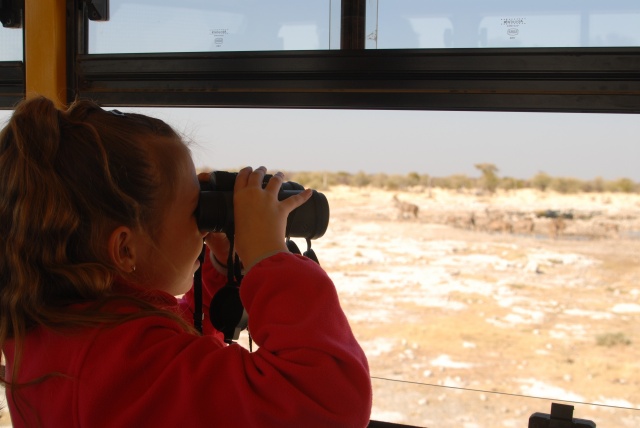As we near the main school holidays, families across the globe will be considering where to take the kids. An African safari can be an especially rewarding experience for younger travellers inspired by creatures great and small, and with walking safaris increasing in popularity there are plenty of opportunities to ditch the 4X4 and track the animals on foot.
We asked Arno Delport, Sales & Marketing Manager at leading safari specialist, Acacia Africa what to expect on one of these more intimate journeys into the African bush…
1. What can families expect on a walking safari?
In contrast to the traditional 4X4 experience, walking safaris offer a more intimate appreciation of the bush in terms of the senses: sight, touch, smell, and hearing. Families will be learning about the plants that they see; viewing the “Small Five” (Leopard tortoise, Elephant shrew, Ant Lion, Rhinoceros Beetle and Buffalo Weaver), taking note of birdlife along with smaller game and sometimes tracking larger mammals, for example, rhino in Zimbabwe’s Matobo National Park.

All wildlife sightings have the same wow factor, but being able to view the continent’s animal kingdom at close quarters on a walking safari undoubtedly heightens the sense of excitement. Experienced local guides who are experts at spotting wildlife, which might otherwise be missed, also add something special to the experience.
2. Why are walking safaris gaining in popularity?
– We have a much greater understanding of our impact on the environment and viewing the game on foot and in small groups minimises that impact.
– This eco-friendly form of safari compliments the traditional 4×4 encounters experienced in, for example, the Masai Mara and the Serengeti.
– Visitors really appreciate the chance to view the wildlife from exceptionally close quarters. Finding yourself a mere few metres away from a herd of zebra or watching an elephant tortoise drinking from a puddle of rainwater is fascinating for safari goers, whether young or old.
– Unhindered by the 4X4 vehicle, on a walking safari it’s a more raw experience where you feel at one with the environment as opposed to encroaching on it when travelling in a 4X4.
– These days we’re more interested in soaking up the destination at our own pace and on a walking safari you can really take the time to stop and stare. It’s also active learning in the here and now for little ones.

3. What are the top walking safari destinations for families?
– The zebra, warthog, tsessebe and impala are just some of the smaller wildlife to be found in South Africa’s Polokwane Game Reserve and it’s renowned as a top birding destination. The reserve’s main attraction is the amount of ground one can cover on foot in a single afternoon – white rhino, and some very rare game, like the sable and tsessebe antelope often encountered by safari goers.
– Zimbabwe’s Matobo National Park is one of the best locations from which to view rhino on the continent. For wannabe rangers, nothing quite beats learning how to track animals in the wild.
– Known as Africa’s last untamed wetland wilderness, Botswana’s Okavango Delta, is a more remote destination for walking safaris. Expect to see large numbers of sitatunga (a swamp-dwelling antelope), red lechwe, and if you’re travelling in green season, a plethora of migratory birds including the Woodland Kingfisher.

– Encountering the endangered white rhino at close quarters in Zambia’s Mosi-Oa-Tunya National Park is a heart racing experience. Buffalo, hippo and numerous species of antelope also reside in its 66 square kilometres and the park is home to our anti poaching rhino mascot and mother of two, Inongwe!
4. Is there anything families should be aware of when they go on these sorts of holidays?
Safety on walking safaris is key to enjoying the experience. Always listen to your guide as they will constantly be on the look out for animal tracks from predators and the behaviour of animals. For example, a male impala frantically stotting (springing into the air) is a display to deter potential attackers, indicating the animal is being chased.
– Always act on the guides’ instructions
– Don’t run in the event of a confrontation, running may trigger the chase instinct in dangerous animals
– Other than when gathered around to discuss something of interest, walks are undertaken in complete silence, with no talking.
– No mobiles, MP3 players, or any electronic device that makes a noise should be carried and digital cameras should be switched to SILENT MODE

– When approaching dangerous animals wait for your guide to indicate when it is ok to take photographs
5. How much do these types of holidays cost?
It really depends on the length of your trip and the parks and reserves you’re planning to visit.
Botswana is traditionally viewed as one of the more expensive safari destinations, but it can still be incorporated into a budget family holiday.

Our seven day Okavango wilderness Trails accommodated small group safari costs from £780pp (two sharing) + Safari Pass from £520pp including transport, accommodation (twin share rooms with en-suite facilities, five nights, twin share pre-erected tent with en-suite facilities, one night), 14 meals, main highlights including walking safaris in the Okavango Delta and services of a tour leader/driver. Excludes return flights. From eight years.
6. Is this kind of experience targeted at a certain age group?
Ideally if you’re on a small group safari with the kids, we stipulate that children should be at least eight years. There is always going to be an element of danger and being more physically demanding the activity is not well suited to tots. Many of the luxury lodges in our Short Safaris & Treks collection will cater to families with younger travellers hoping to experience the safari setting from the safety of a 4X4 vehicle.
For more information on Acacia Africa’s family friendly small group safaris please visit the website, Facebook or Twitter @AcaciaAfrica.




